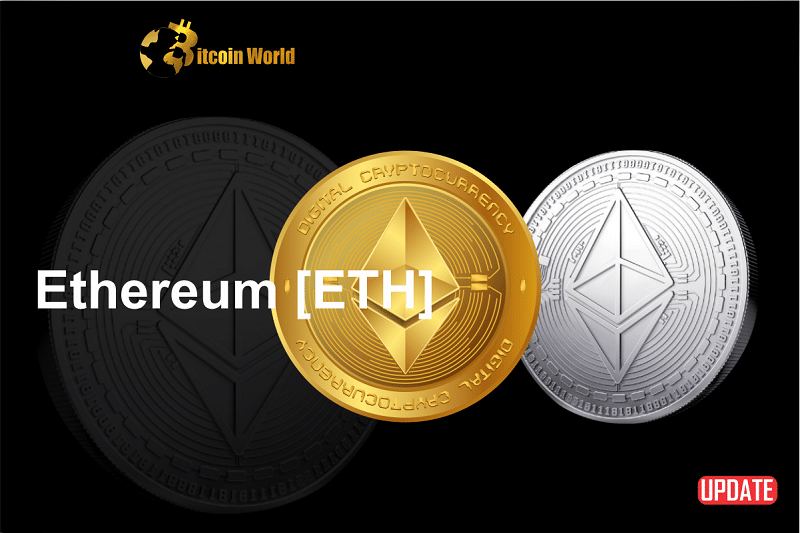The much-anticipated Ethereum [ETH] Shapella upgrade finally went live on April 12th, unlocking a new era for the proof-of-stake network. But the initial euphoria has given way to intriguing market dynamics. What exactly happened after validators gained the ability to withdraw their staked ETH? Let’s dive into the on-chain data and explore the ripple effects of this significant update.
The Great Validator Shift: Are We Seeing an Exodus?
Data from Glassnode reveals a fascinating trend: a noticeable decrease in the number of active validators on the Ethereum network since the Shapella upgrade. Prior to April 12th, the network boasted 562,941 active validators. Within just 24 hours of the update, this number dipped to 561,655 and has remained at that level since. While this might seem like a small drop, the bigger picture lies in the surge of voluntary exits.
Why are Validators Leaving?
- Unlocking Staked ETH: The Shapella update allowed validators who had locked up over 18 million ETH to finally withdraw their holdings. This was a highly anticipated event, and some validators are indeed taking advantage of this new flexibility.
- Profit Taking: Many validators initially staked their ETH with the goal of earning rewards. With withdrawals now possible, some are likely realizing their profits.
- Operational Considerations: Running a validator node requires technical expertise and infrastructure. Some validators might be exiting due to the ongoing demands and responsibilities.
The numbers speak for themselves. Looking at a 30-day moving average, voluntary exits from the validator pool have increased by a staggering 400% since Shapella. According to a Nansen dashboard, over 10,000 validators were planning a complete exit in a single hour at the time of the initial reports.
The Price Rollercoaster: Initial Surge Followed by a Dip
Leading up to Shapella, there were predictions of a significant ETH price crash due to the anticipated sell-offs. However, the immediate aftermath told a different story. Between April 12th and 16th, the price of ETH actually saw a positive surge, climbing by 14% according to CoinMarketCap data and briefly trading above $2,000.
But the rally was short-lived. Since April 16th, ETH’s price has experienced a decline. As of the latest update, ETH is trading around $1,897.75, representing an approximate 11% drop from its recent peak.
What Caused the Price Fluctuation?
- Initial Optimism: The successful implementation of Shapella was seen as a positive development for the Ethereum network, initially boosting investor confidence.
- Withdrawal Sell-offs: As anticipated, some validators who withdrew their ETH likely sold their holdings, contributing to the subsequent price decrease.
- Broader Market Sentiment: The overall cryptocurrency market can influence the price of ETH. External factors and general market trends could also be playing a role.
Whale Watching: Who’s Buying and Who’s Selling?
Analyzing the behavior of large ETH holders, often referred to as “whales,” provides further insights into market dynamics post-Shapella.
The Accumulators: Mega Whales are Stockpiling
Interestingly, the largest ETH whales, holding between 100,000 and 10,000,000 ETH tokens, have actually increased their holdings since the Shapella upgrade. Santiment data indicates a 2.5% growth in this category of whales. This suggests a belief among the biggest players in the long-term potential of Ethereum, even amidst the validator withdrawals and price adjustments.
The Risk-Averse: Smaller Whales are Reducing Holdings
On the other hand, whales holding between 1,000 and 100,000 ETH coins appear to be taking a more cautious approach. Santiment data reveals a 1% decrease in the number of these mid-sized whales since Shapella. This could indicate a risk-off strategy, with these holders potentially reducing their exposure due to market uncertainty.
Market Sentiment: From Hope to Hesitation
The Shapella upgrade initially injected positive sentiment into the market around April 14th. However, this optimism proved fleeting. As the price began to decline, market sentiment quickly shifted back into negative territory. As of the latest data, the market sentiment score stands at -1.172, indicating a prevailing bearish outlook. This pervasive negativity could present a hurdle for any significant near-term price recovery for ETH.
Key Takeaways and Actionable Insights
- Validator Dynamics are Shifting: The ability to withdraw staked ETH is leading to a reshuffling of the validator landscape. While some are exiting, this could also create opportunities for new validators to enter the space.
- Price Volatility is Expected: Major network upgrades often bring price fluctuations. Investors should be prepared for continued volatility in the short term as the market adjusts to the new dynamics.
- Whale Behavior Offers Clues: Tracking the actions of large ETH holders can provide valuable insights into market sentiment and potential future price movements. The divergence in behavior between mega-whales and smaller whales is particularly noteworthy.
- Monitor Market Sentiment: Keep a close eye on market sentiment indicators. A sustained shift towards positive sentiment could be a precursor to a potential price rebound.
Conclusion: Navigating the Post-Shapella Landscape
The Ethereum Shapella upgrade has undeniably ushered in a new chapter for the network. While the ability for validators to withdraw their staked ETH has led to some expected adjustments, including a decrease in active validators and price fluctuations, it’s crucial to look beyond the immediate reactions. The long-term implications of Shapella for Ethereum’s security, decentralization, and overall ecosystem are still unfolding. As the market digests these changes and new validators potentially enter the fold, the dynamics will continue to evolve. Staying informed and understanding the underlying trends will be key for anyone navigating the exciting, yet often unpredictable, world of Ethereum.
Disclaimer: The information provided is not trading advice, Bitcoinworld.co.in holds no liability for any investments made based on the information provided on this page. We strongly recommend independent research and/or consultation with a qualified professional before making any investment decisions.


